Introduction
In the contemporary landscape of digital transformation, cloud migration has emerged as a pivotal strategy for organizations seeking to enhance operational efficiency and maintain a competitive edge. This systematic process, which involves transferring critical business components from on-premises infrastructure to various cloud environments, is not merely a technical endeavor; it aligns closely with strategic business objectives.
As the volume of corporate data stored in the cloud continues to surge—projected to represent 60% of all data by 2023—understanding the nuances of cloud migration becomes essential. This article delves into the intricacies of cloud migration, exploring effective strategies, the myriad benefits it offers, and the challenges organizations may encounter.
By equipping themselves with this knowledge, businesses can navigate the complexities of cloud migration and unlock its full potential for future growth.
Understanding Cloud Migration: An Overview
The transition to remote storage involves the organized procedure of moving information, applications, and other essential business elements from local infrastructure to online environments, which can consist of public, private, or hybrid models. Grasping the basic concepts of transitioning to a remote infrastructure is crucial, as it merges technical implementation with strategic alignment to overarching business objectives. In 2023, corporate information storage in the digital space comprised 60% of all information, highlighting the urgent necessity for organizations to adjust to this transition.
Companies often seek cloud migration solution services to transition to online services, improve scalability, optimize resource distribution, and substantially lower operational expenses. With forecasts suggesting that total worldwide information will attain 200 zettabytes by 2025, the strategic significance of transitioning to virtual storage becomes even more evident. The digitization of life and the connectivity of smart devices lead to an exponential increase in information generation, as highlighted in the case study titled 'Cloud Data Storage Statistics.'
Furthermore, global energy consumption by data centers accounts for 1% of the world's energy usage, which highlights the environmental impact of migration—a critical consideration for CTOs. As digital tools become essential to operations, understanding the intricacies of data transfer is crucial for sustaining a competitive advantage in a rapidly evolving technological environment. Furthermore, with 75% of organizations indicating a rise in waste from online services—estimated to utilize up to 47% of budgets for these services—grasping effective cloud migration solution services is essential for maximizing investment returns.
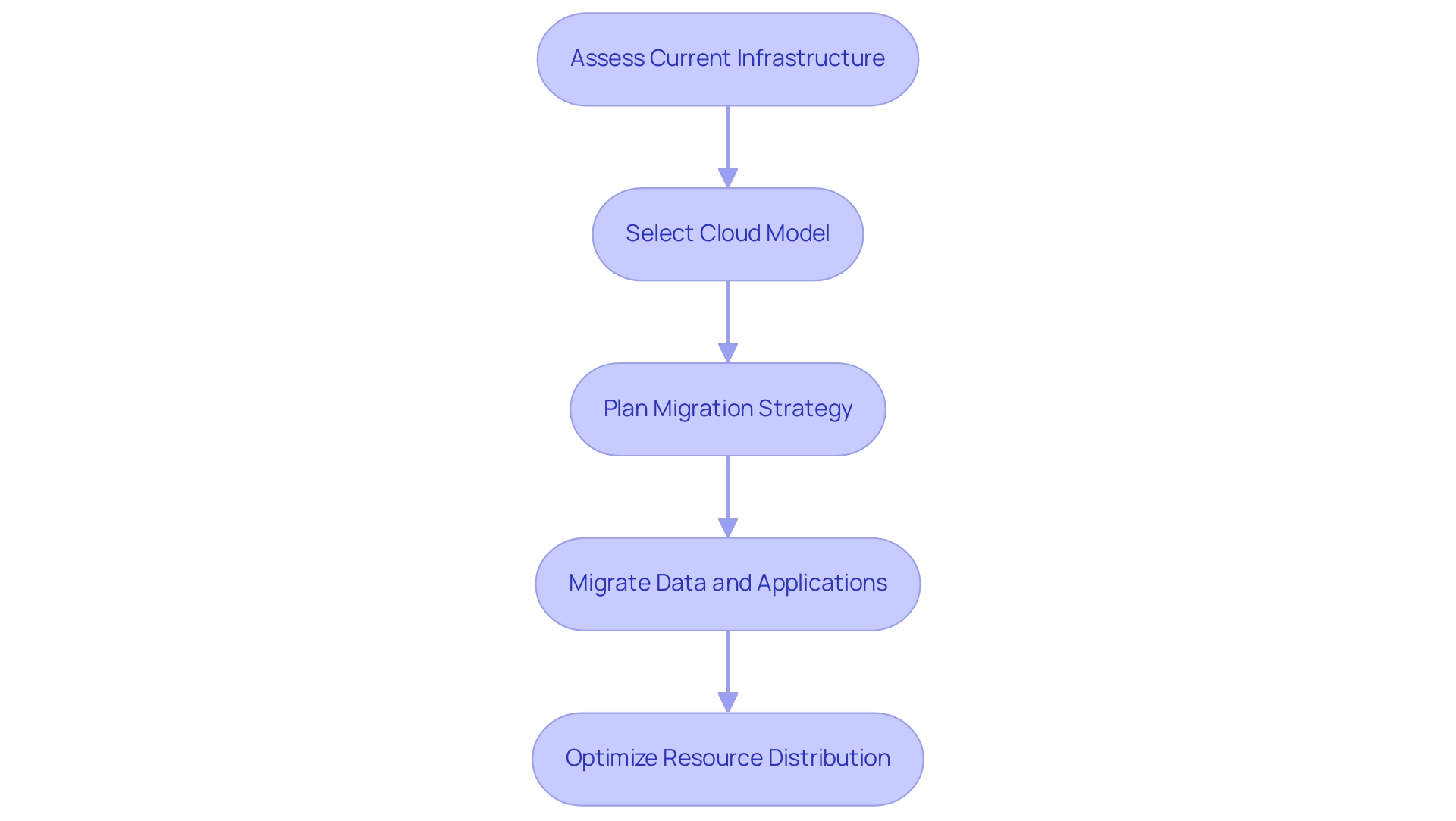
Exploring Cloud Migration Strategies: Choosing the Right Approach
Organizations embarking on cloud migration have several strategies at their disposal, each with distinct advantages and considerations:
-
Rehosting (Lift and Shift): This strategy involves moving applications to the cloud as they are, without significant modifications. While it is frequently the quickest method for transfer, it may not completely utilize the features of online infrastructure, possibly resulting in overlooked chances for enhancement.
-
Replatforming: This approach requires making minimal adjustments to applications to better align them with the online environment. Although a significant portion of the application remains intact, these adjustments can lead to improved performance and operational efficiency.
-
Refactoring: This strategy entails a more extensive redesign of applications to leverage cloud-native features fully. While it necessitates a greater investment of time and resources, refactoring can yield significant enhancements in application performance and scalability.
As Rebecca Grassing, Product Marketing Manager at Auvik, notes, "Explore the top healthcare IT trends for 2024, including key security, outsourcing, and technology updates shaping the future of the industry." This highlights the essential role of cloud migration solution services in transitioning to online services and adapting to these trends. Furthermore, organizations face significant challenges in managing expenditures related to online services, with 75% reporting an increase in waste, and some indicating that waste could be as high as 47% of their budget for these services.
This statistic emphasizes the significance of selecting the appropriate cloud migration solution services to reduce expenses.
Furthermore, hybrid strategies offer businesses enhanced flexibility to shift workloads between environments, allowing for increased control over data and enabling the storage of sensitive information in a private setting while operating enterprise applications on a public platform. Selecting the most appropriate strategy for cloud migration solution services hinges on various factors, including budget constraints, project timelines, and specific business objectives. As entities navigate these choices, comprehending the implications of each migration strategy becomes vital for maximizing the advantages of computing in 2024.
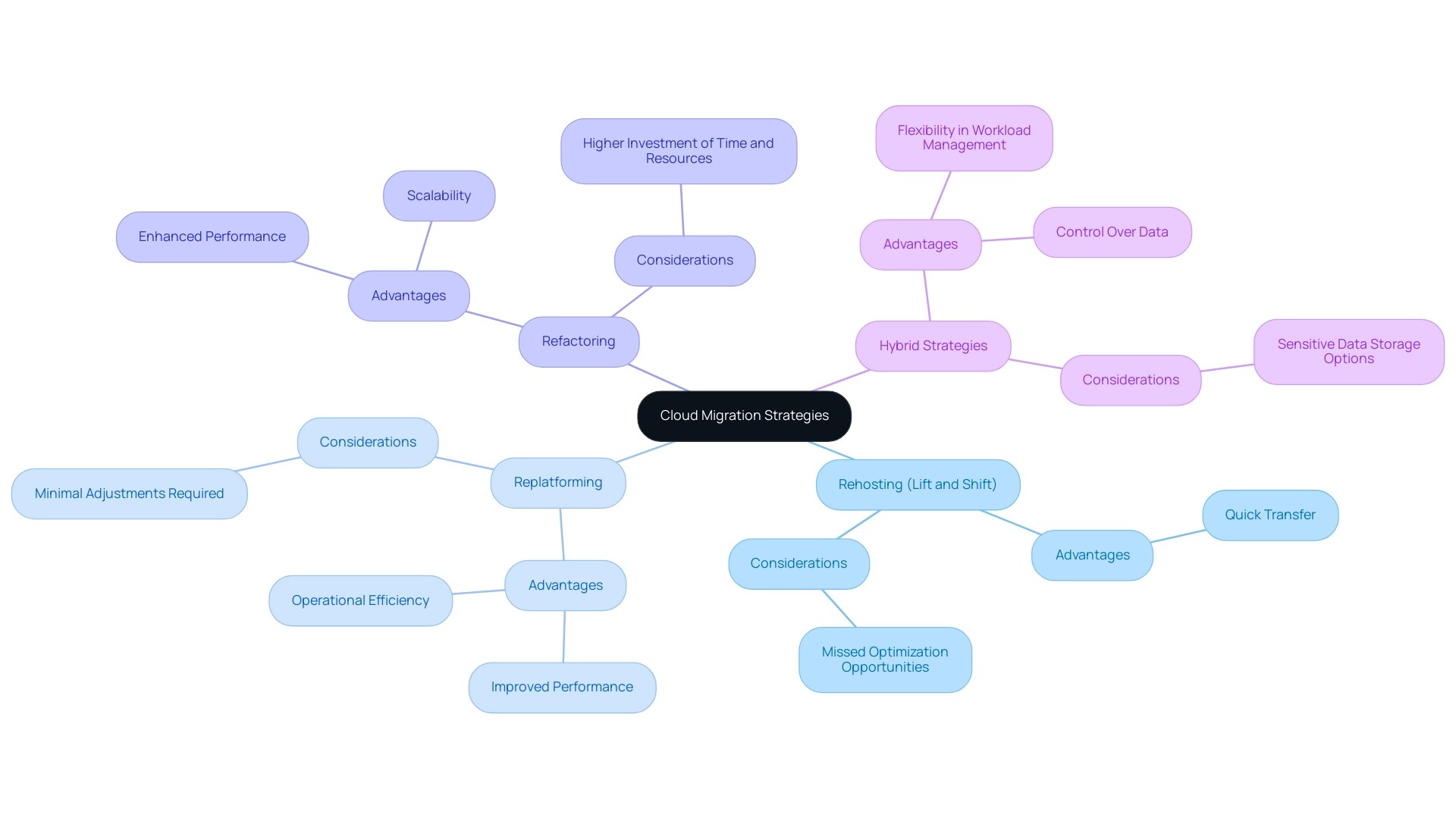
The Benefits of Migrating to the Cloud: Unlocking Potential
Transitioning to online storage offers numerous benefits essential to contemporary business activities, especially as we anticipate 2024. Among the primary benefits of cloud migration solution services are:
- Scalability: These services enable organizations to swiftly adjust their resource allocations in response to fluctuating demand, ensuring they remain agile in the face of market changes. With the number of connected devices projected to rise, the ability to scale effectively becomes increasingly vital.
For instance, Google Cloud's IaaS offering has seen significant growth, outpacing competitors in recent years, positioning it favorably in the competitive IaaS market.
- Cost Efficiency: Implementing cloud migration solution services enables businesses to move to virtual infrastructure, significantly reducing the need for physical hardware and maintenance while optimizing their IT budgets. However, it's important to recognize that increased spending on services can also lead to higher waste; as noted by StormForge, many companies find that greater investment in resources does not always correlate with improved efficiency.
Furthermore, it's significant that global energy usage by online storage facilities represents 1% of the world's energy consumption, emphasizing the necessity for effective resource management. Cloud migration solution services enhance collaboration by supporting remote access, enabling teams to collaborate seamlessly from any location. This flexibility fosters a more productive work environment, essential in today's increasingly remote workforce.
- Enhanced Security: Leading cloud migration solution services invest significantly in advanced security protocols, often exceeding the security measures that individual organizations can implement. This investment in security not only protects sensitive data but also enhances overall operational resilience.
These benefits collectively contribute to improved operational efficiency and provide a formidable competitive advantage in an evolving market landscape.
For those seeking to make informed choices about transitioning strategies, immediate access to statistics, forecasts, and reports with a Statista Account can be invaluable.
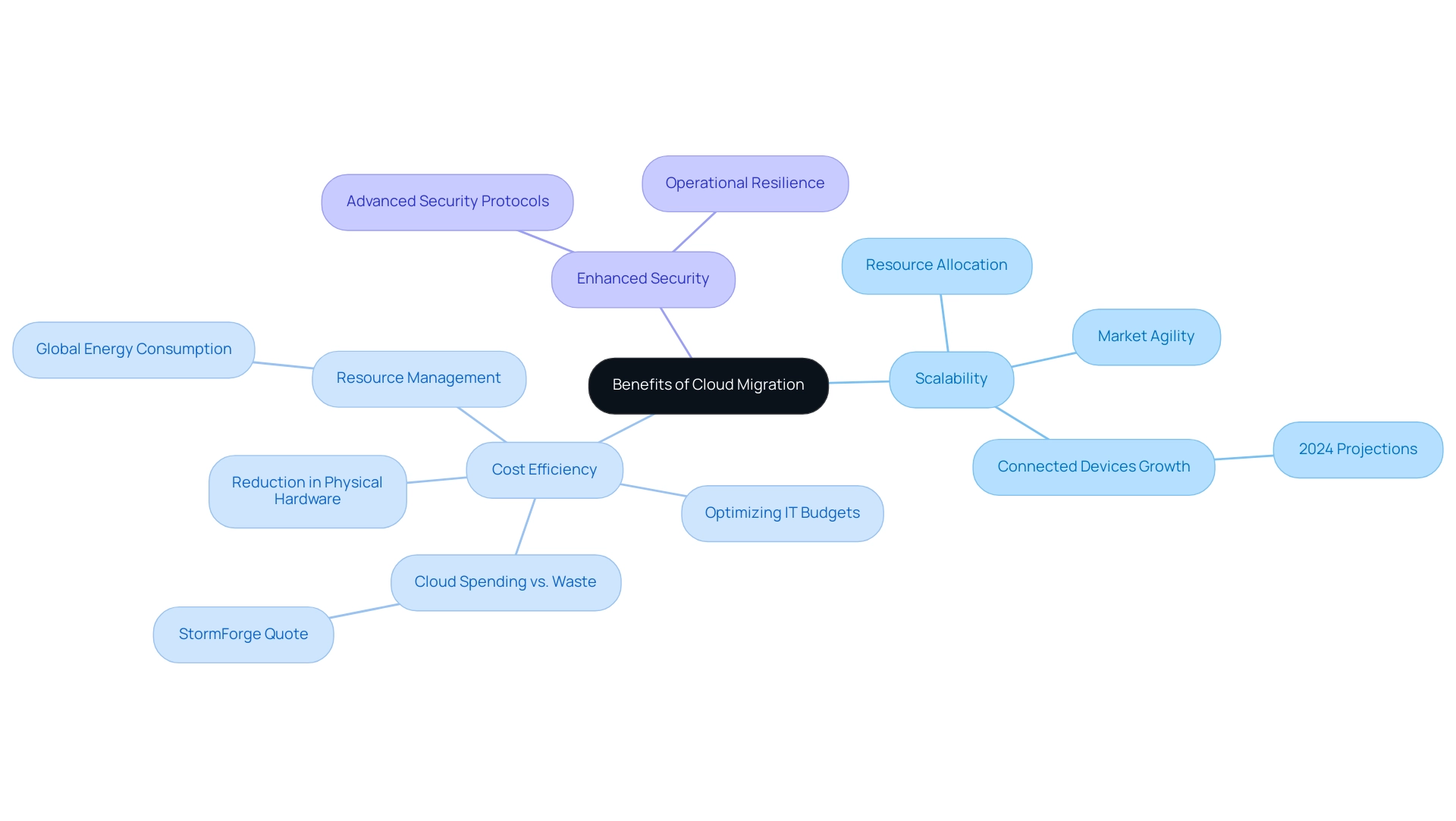
Navigating the Challenges of Cloud Migration: What to Expect
Although utilizing cloud migration solution services provides significant advantages, companies must get ready for various obstacles that may occur during the procedure. Among the most critical issues are:
- Information Security and Compliance: Protecting sensitive information during migration and adhering to regulatory standards poses significant challenges. Organizations need to implement comprehensive risk assessments and establish robust security protocols to safeguard their information. Notably, half of the surveyed businesses recognize that cloud migration solution services play a crucial role in today’s data protection strategy, underscoring the importance of these measures. Additionally, entities can utilize resources such as a free guide and exercise kit to assess shadow IT risk factors, ensuring that all potential vulnerabilities are addressed.
- Downtime Risks: The transfer process can result in temporary service disruptions, adversely impacting business operations. It is imperative for organizations to plan for potential downtime and communicate effectively with stakeholders to minimize operational disruptions. Considering that waste in computing can comprise up to 47% of a budget, careful management of migration processes with cloud migration solution services is essential to avoid unnecessary expenses. Furthermore, the ongoing digitization and connectivity of devices have resulted in a rapid rise in data generation, with projections suggesting that by 2025, 50% of data will be stored online. This trend highlights the increasing need for efficient online storage solutions.
- Skill Gaps: Many current IT teams may lack the necessary expertise in this area, leading to a need for additional training or the recruitment of specialized talent. Addressing these skill gaps is crucial for a successful transition.
- Integration Issues: Legacy systems often struggle to integrate seamlessly with contemporary solutions, potentially leading to unexpected behaviors during testing. Organizations must approach these integration challenges with a strategic mindset, possibly requiring redesigns to ensure compatibility.
By proactively recognizing and tackling these challenges, entities can develop effective strategies through cloud migration solution services to reduce risks, ultimately facilitating a more efficient and secure transfer process.
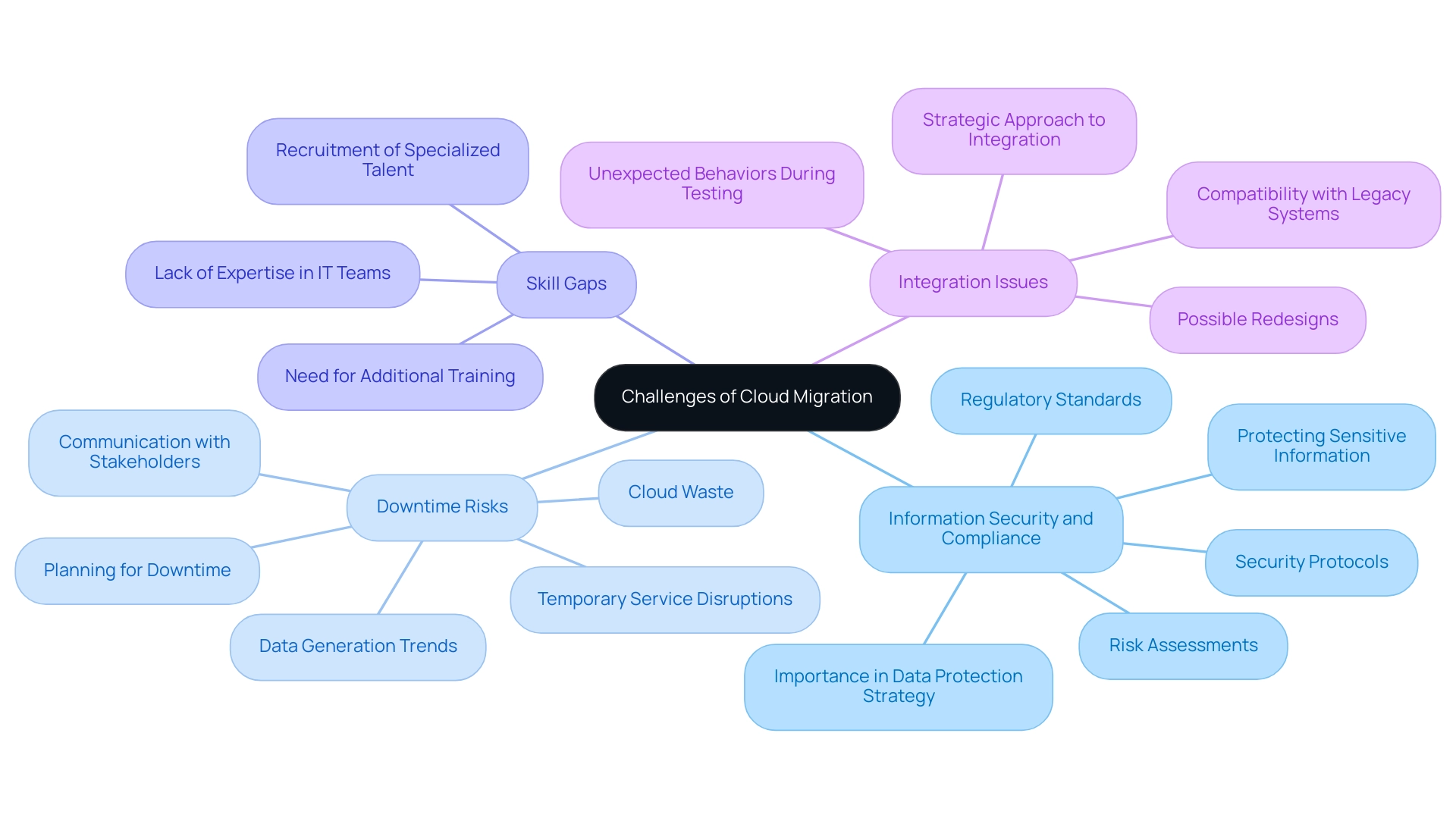
Best Practices for Successful Cloud Migration: Expert Tips
To achieve a successful cloud transition, entities should adhere to the following best practices:
- Conduct a Thorough Assessment: A comprehensive evaluation of existing IT infrastructure, applications, and data is crucial. This assessment will inform decisions on what should be migrated and which strategies are most suitable for the organization’s specific needs.
- Create a Detailed Transition Plan: Developing a clear transition roadmap is essential. This plan should outline each phase of the transition process, detailing timelines, roles, and responsibilities to ensure accountability and transparency.
- Prioritize Data Security: Security must be a fundamental consideration throughout the transfer process. This includes implementing robust measures such as encryption and access controls. Engaging compliance teams early in the process is vital to effectively address regulatory concerns.
- Engage Stakeholders: Effective communication with all stakeholders—including IT staff, management, and end-users—is critical for ensuring alignment and addressing potential concerns. As noted by Rebecca Grassing,
Explore the top healthcare IT trends for 2024, including key security, outsourcing, and technology updates shaping the future of the industry.
This underscores the importance of keeping all parties informed and involved. Additionally, it is crucial to acknowledge that 56% of IT decision-makers do not comprehend their service provider’s strategies for AI integration, emphasizing the difficulties in integration and the need for clear communication. The case study titled 'Understanding of AI Integration Plans' demonstrates the significance of openness from service providers, as enhanced communication is necessary to enable successful transitions. - Monitor and Optimize After Transition: Once the transition is complete, entities should concentrate on ongoing performance monitoring and enhancing systems to fully utilize their capabilities. This not only promotes cost-efficiency but also ensures alignment with evolving business objectives. Consistent input from users is essential in pinpointing areas for enhancement and ensuring that the transition meets these objectives.
By implementing these best practices, organizations can significantly enhance their chances of achieving successful cloud migration solution services, ultimately fostering business growth and innovation.
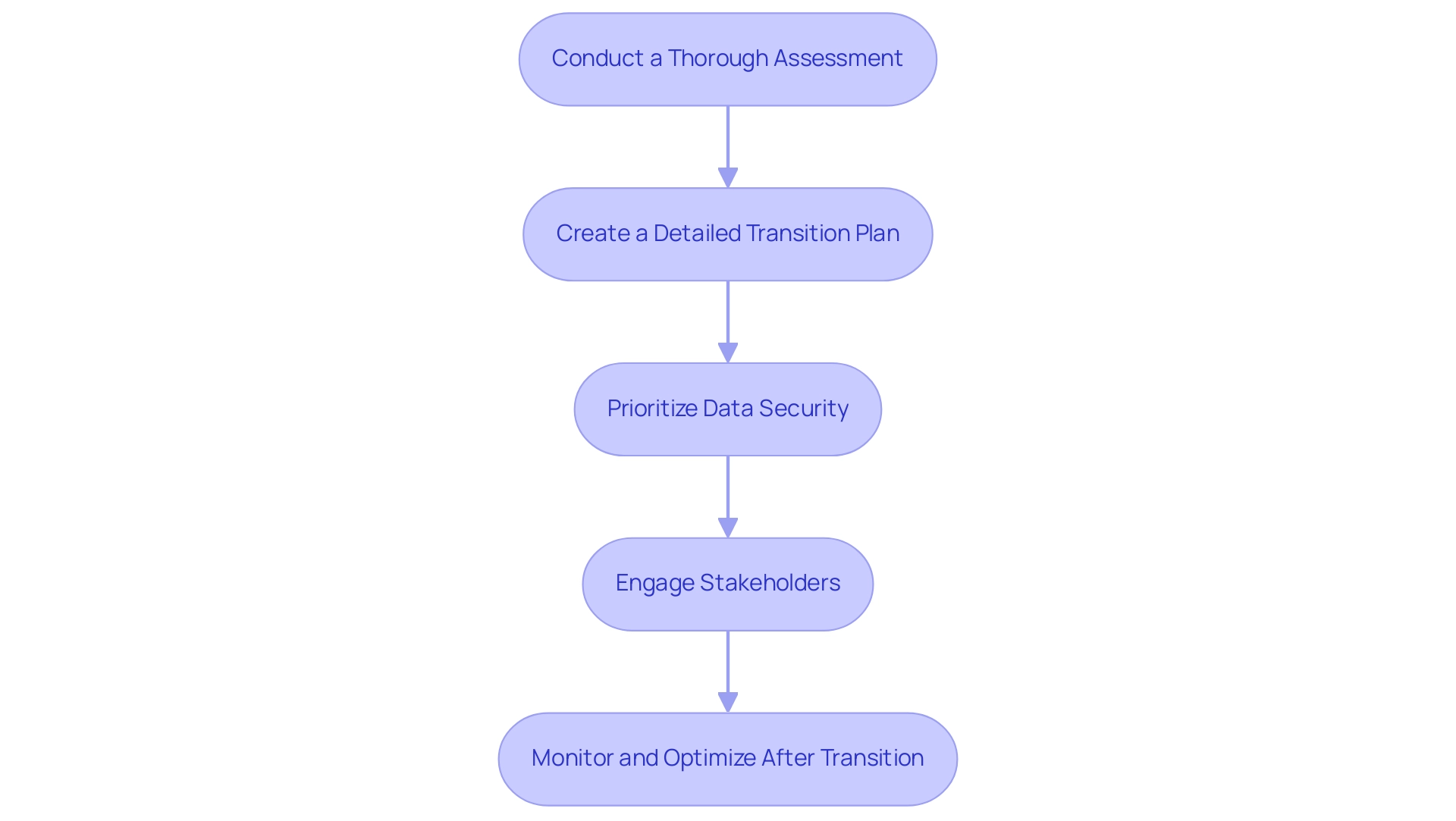
Conclusion
Cloud migration represents a critical evolution in how organizations manage their data and applications, aligning technical execution with strategic business goals. As highlighted, the shift to cloud environments is no longer a choice but a necessity, with projections indicating that a substantial portion of corporate data will reside in the cloud within the next few years. The various migration strategies—rehosting, replatforming, and refactoring—each offer unique advantages that can be leveraged depending on an organization’s specific needs and objectives.
The benefits of cloud migration are profound, encompassing:
- Enhanced scalability
- Cost efficiency
- Improved collaboration
- Robust security measures
However, organizations must also navigate significant challenges, including:
- Data security
- Potential downtime
- Skill gaps within their teams
Addressing these challenges through careful planning and adherence to best practices is essential for a successful transition.
Ultimately, understanding the intricacies of cloud migration empowers organizations to harness its full potential, ensuring they remain competitive and capable of adapting to the rapidly evolving digital landscape. As businesses continue to embrace this transformation, the emphasis on strategic alignment and effective execution will be paramount in unlocking the myriad opportunities that cloud technology offers for future growth and innovation.




